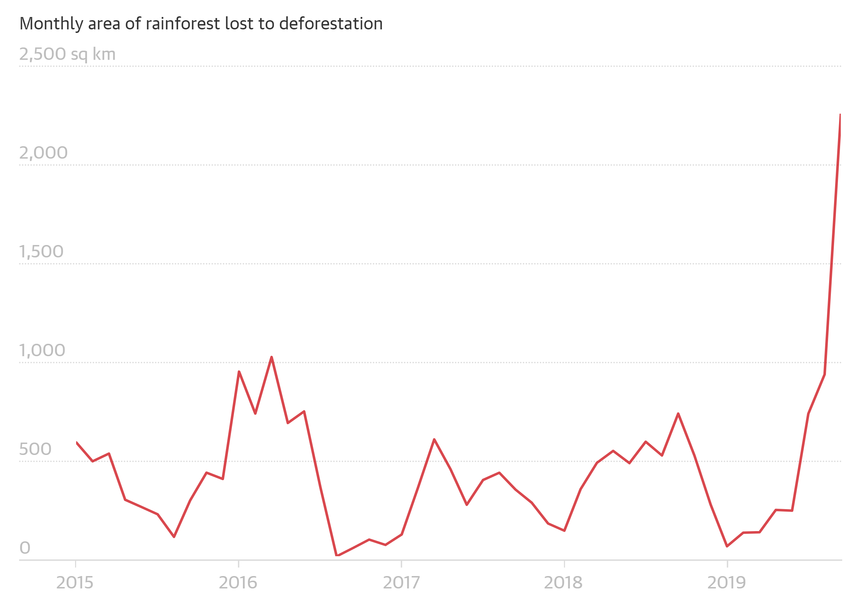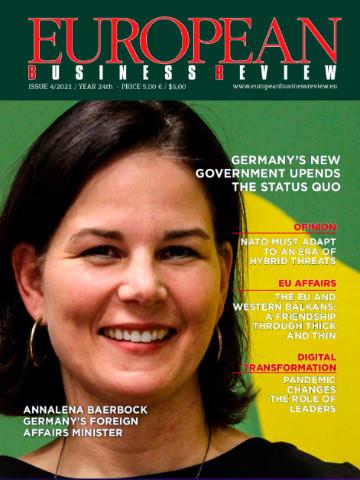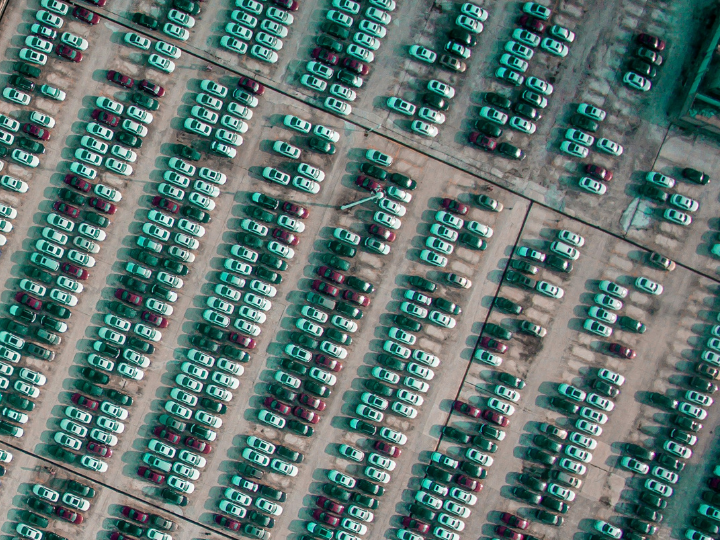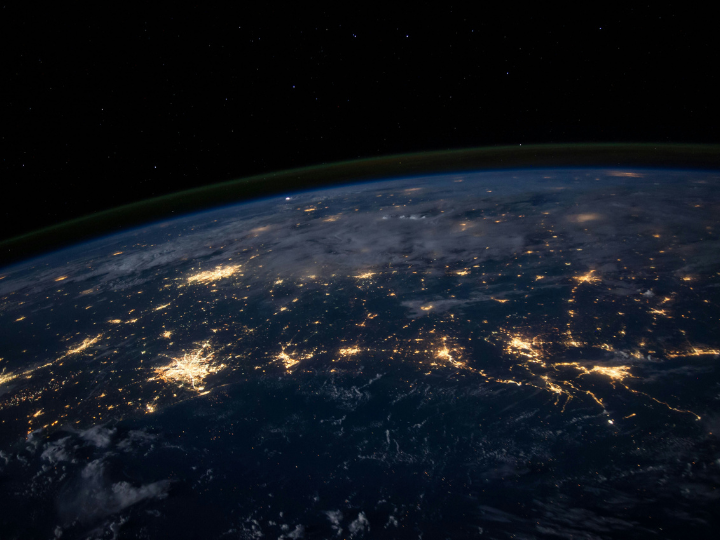By Paulo Barreto and Robert Muggah*
News coverage of the catastrophic impacts of global warming are everywhere. From the Arctic to Brazil, the house is clearly on fire.
One study recently estimated that the productivity of the 10 most important agricultural crops has on average decreased worldwide due to a warmer and drier climate. Make no mistake, climate change is already contributing to hunger, migration and conflict.
And while we face a climate emergency of unprecedented scale, there are also signs of possible solutions. Scaling measures to reverse climate change will require large-scale disruption, clarity of purpose and unwavering commitment.
The Amazon basin is centre-stage in the debate over the causes of and solutions to global warming. Spanning over 7 million square kilometres, it accounts for over 40 percent the world/s entire stock of tropical forests, 20 per cent of the global fresh water supply and regulates rainfall, cloud cover and ocean currents.
As media headlines around the world are showing, these forests are under threat due to fires, relentless deforestation and degradation. Much of this is caused by cattle rearing, soy production, mining and selective logging.
Scientists are concerned that the Amazon is perilously close to a tipping-point creating conditions so hot and dry that local species could not regenerate. If 20-25 percent of the tree cover is deforested, the basin’s capacity to absorb carbon dioxide would collapse. If this happens, the world/s largest tropical forest will become its biggest patch of scrubland.

This would not only lead to rapid deterioration of biodiversity, it would profoundly upset the process of evapotranspiration which influences cloud cover and the circulation of ocean currents.
Countries like Brazil have a central role to play in the protection of the Amazon basin. Part of the reason is geographic – 60 percent of the Amazon is in Brazil, with the rest divided up between Bolivia, Colombia, Ecuador, Guyana, Peru, Suriname and Venezuela. Until recently, Brazil had a positive record having reduced deforestation by roughly 80 percent between 2005 and 2012.
This did not happen by accident, but rather through concerted public investment in law enforcement, the creation of protected areas that acknowledged the rights of indigenous people, and the restricting of rural credit to law abiding farmers. A moratorium on soy produced in deforested areas after 2006 was also critical.
Yet these gains were short-lived, since deforestation levels increased steadily about five years ago. Part of the reason is that several large agribusinesses pushed back, concerned that Brazil’s robust environmental protections were cutting into their profits.
The then ruling government and congress caved, pardoning prior illegal deforestation activities in 2012 and reducing the number of protected areas. Between 2013 and 2018, deforestation soared by over 70 percent, with many land users feeling newly empowered and immune to penalties. The scale of deforestation continued its dramatic upward trajectory under the administration of President Jair Bolsonaro that took power in 2019.
So what steps can be taken?
The most obvious involves doling out penalties. This includes imposing heavy fines on companies with dirty supply chains, divestment strategies targeting key violators, publicized product boycotts and environmental campaigns shaming those involved in illicit activities. But all this requires better evidence, including more investment in the scientific detection of illegal deforestation and sustained enforcement of existing laws related to environmental crimes. The key is to reduce land-grabbing and unproductive land use. In doing so, this can decrease deforestation while simultaneously raising the value of agricultural production by increasing productivity of under-used deforested areas.
The public and private sectors can also incentivize sustainable land use and forest conservation. For example, expanding political and financial support for progressive governors and civil society groups promoting sustainability is key.
Consider the work of the Brazilian climate, forestry and agriculture coalition that is advocating for public and private partnerships to curb deforestation, stimulate land restoration and increase land-use efficiency. The coalition includes banks, beef packing groups, agricultural producers and landowners who are committed to more sustainable business practices. They are acting out of enlightened self-interest, especially since demanding international creditors are expecting greener supply chains.
While still only one part of the solution, there are encouraging signs of new efforts to finance sustainable agribusiness. Take the case of the Responsible Commodities Facility unveiled by the London Stock Exchange. It is the world’s first green bonds scheme to provide low-interest credit lines for sustainable food production. Farmers that use degraded pasture and avoid clearing forests for agriculture are provided access to up to $1 billion over the next four years to plant close to 190 million tons of soy and corn. The facility also seeks to protect and restore up to 3.7 million kilometres of the Brazilian savanna (“Cerrado biome”) – which is also under threat - to reduce 250 million tons of carbon dioxide emissions.
Meanwhile, the Chinese-owned trading firm COFCO International has joined forces with 20 banks to issue a $2.1 billion financing facility to support sustainability. The facility pegs the margin that a group must pay to its progress in meeting environmental, social and corporate governance targets in agricultural commodities in Brazil.
The goal is to promote sustainable sourcing of soy and re-invest margins savings into reforestation and protecting land in the Amazon. Other traders such as Olam and Louis Dreyfus have also agreed to renew similar sustainability financing arrangements valued at over $750 million.
Ultimately, the beef industry is key to reducing deforestation since 80 percent of the cleared areas under agriculture use is covered with pastureland. Many international importers and sellers are keen to green their supply chains to avoid global consumer backlash. While still very early days, Marfrig Global Foods, one of the world’s largest beef producers, recently launched sustainability bonds. Marfrig/s $500 million dollar decade-long offering brings together a number of large banks to support investments that avoid deforestation and reduce carbon emissions.
Marfrig already launched several initiatives to encourage suppliers to adopt zero-carbon practices and certify products with the Rainforest Alliance. For the system to work, traceability guarantees are essential. Domestic meat producers in Brazil are also wary since the larger chains that sell their products – Carrefour, Casino, Walmart and others – are foreign owned (and are committed to zero carbon standards, in principle).
In its 2019 report, the Intergovernmental Panel on Climate Change recommended a host of initiatives that could help reduce deforestation. Not all of them involve policies or investments in Brazil, of course. For example, if all of us reduce food waste, less food and therefore less land will be necessary to feed the world’s growing population.
A more balanced human diet that includes (much) less animal protein would likewise reduce the emissions associated with food production. These are not optional extras, but essential behavioral shifts that are critical for mitigating catastrophic climate change. While necessary, these transitions will take time.
Ultimately, the fate of our climate and ecosystems depends on what happens next in the Amazon. Brazil has shown how deforestation can be rapidly reduced through a combination of public and private policies. The prospects for government change are uncertain. To the contrary, Brazil’s current political leadership has said it intends to scale-up exploitation of the Amazon for cattle, minerals and timber. The president and environment minister are also hostile to climate science, having recently sacked the head of the space institute responsible for monitoring deforestation.
Indonesia has just made its moratorium on forest clearance permanent
Growing numbers of foreign governments and domestic business coalitions fear that the government’s policies are putting the Amazon at risk. After months of sabre-rattling with the Brazilian authorities, Norway and Germany postponed contributions to the $1 billion Amazon Fund. The president of France and chancellor of Germany have also described the situation in the Amazon as an “acute emergency”, calling for it to be at the top of the agenda for the G7.
Meanwhile, in Brazil, the presidents of the Sustainable Development Business Council and Brazilian Association of Agribusiness have criticized government proposals to open up protected forests, with the latter calling it an unmitigated disaster. The Brazilian Tree Industry (IBA), representing over $10.7 billion of exports, is worried that the country’s hard-earned reputation for conservation could be irreparably damaged.
A growing number of politicians and business leaders recognize that their future depends on a more proactive approach to protecting the Amazon. For example, several state governors have publicly rejected the federal government’s measures, called for decentralizing international aid to the states, and advocated for more cooperation to protect Amazon resources. Eight former environment ministers and a former agriculture minister have come out in opposition to the president’s proposals. And after the government/s policies came under criticism from the likes of The Economist, New York Times and Financial Times, local groups have felt more emboldened to push back.
Brazilians also appear to be increasingly receptive to a more sustainable approach to protecting the Amazon. Opinion polls have shown that Brazilians favor forest conservation and respect the rights of indigenous peoples: more than 96 percent of them believe the government needs to take more action to prevent illegal deforestation and 86 percent of them oppose opening-up protected indigenous areas to exploitation.
Earlier this month, several senators withdrew a proposal to terminate the "legal reserve" in the face of mounting public pressure. This week the head of Congress said they would establish commissions to deal with fires in the Amazon and propose solutions. While it will be challenging to steer Brazil back to the road of sustainability, the costs of not doing so are incalculable.
*Paulo Barreto, Senior Research, IMAZON- Instituto do Homem e Meio Ambiente da Amazonia
*Robert Muggah, Co-founder, Igarape Institute and SecDev Group
**Firt published in weforum.org




 By: N. Peter Kramer
By: N. Peter Kramer

